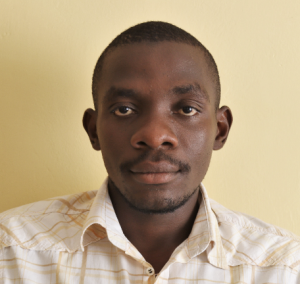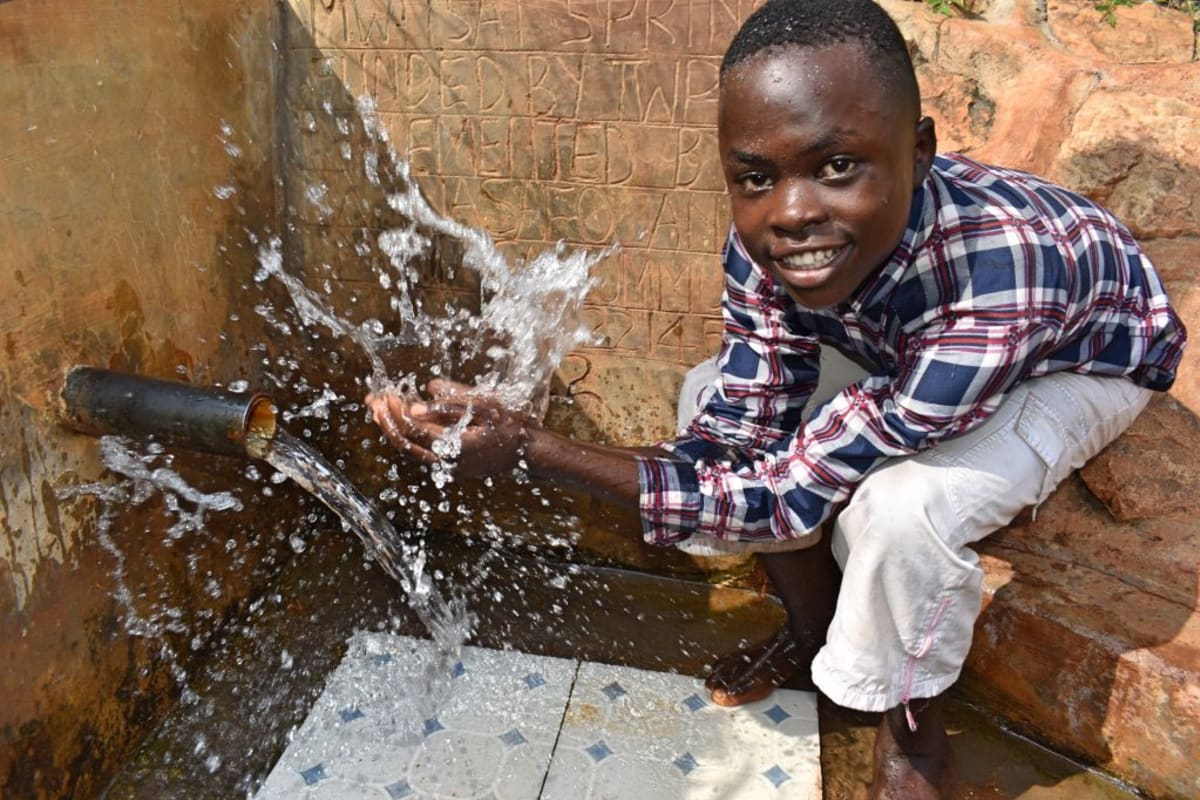Mwitsai Spring is the primary water source for the 400 people of Mwitsai, but the brown, murky water is a sure sign that its water is not safe for human consumption.
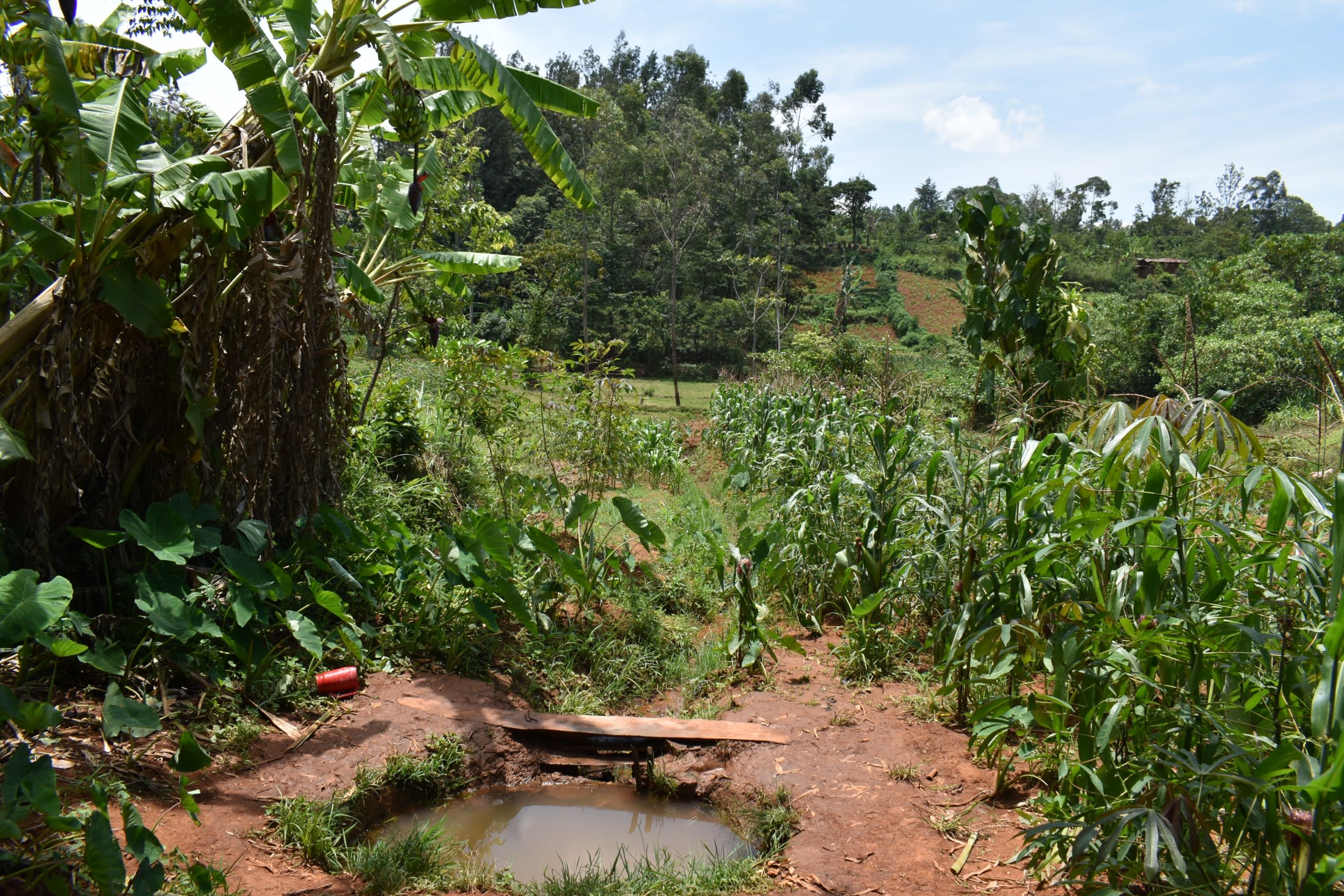
Community members do their best to collect water first thing in the morning before the sediment at the bottom of the pool is stirred up by other water-fetchers. If they cannot visit the spring early, they often wait until late in the evening, hoping the water would have settled. But sadly, no amount of settling will remove the unseen dangers lurking in the water that inflict people with frequent sore throats and stomachaches.
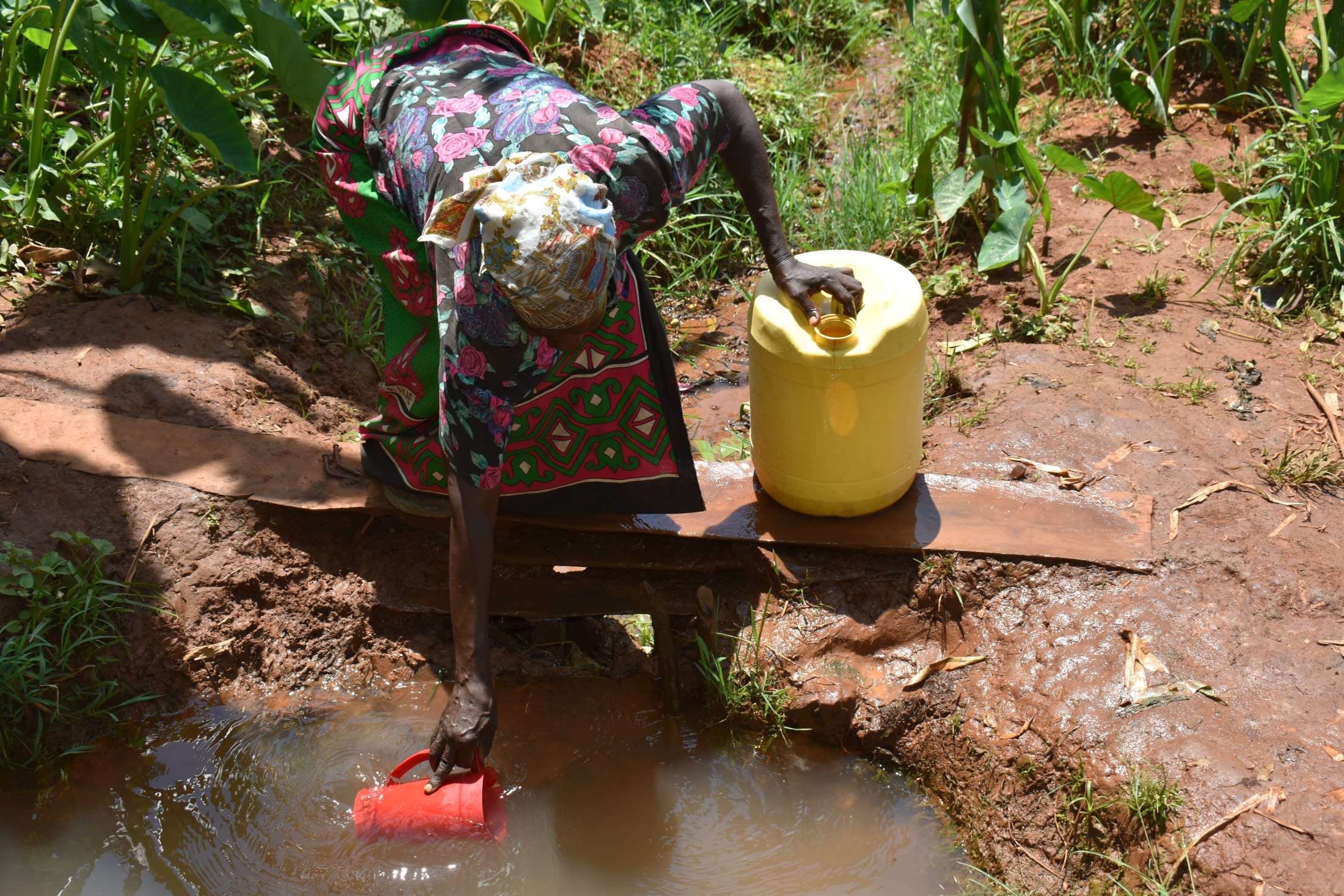
"We are not sure of the quality of the water we are drinking; being an open source, everything that wishes to get into the water will. Our neighbors here complain of frequent sore throats, which can be linked to consumption of water from the open water source," said Selina Akhonya, a small-scale farmer shown scooping water above.
A young boy from the community echoed Selina's sentiments. "You'll find small children in the course of fetching, dipping their hands and whole container into the water, thus contaminating the water," said Evans S., scooping water below.
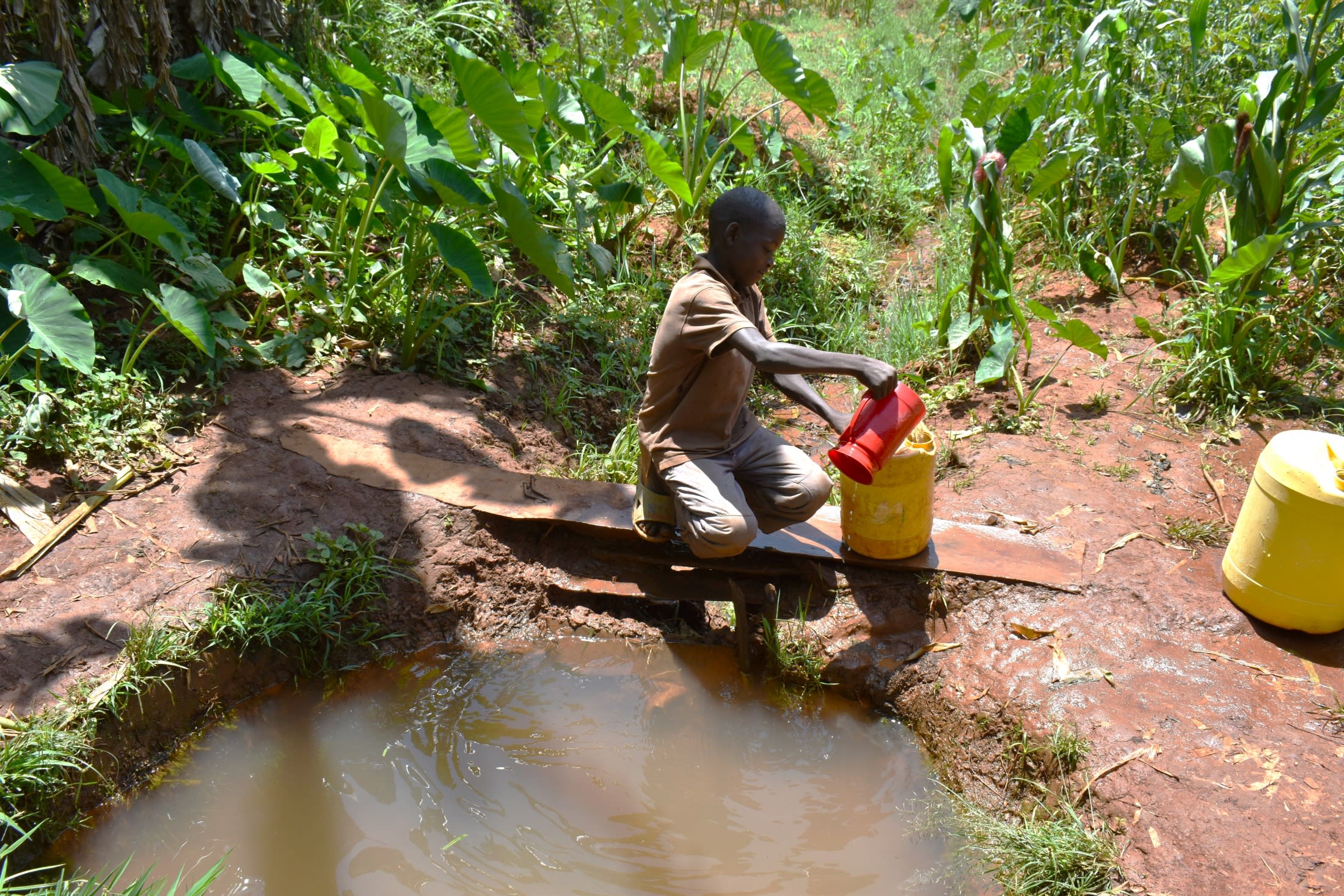
Community members walk a narrow path through surrounding farm plots to arrive at the water pool that dirt banks encase. People must crouch down and balance on a wood plank to collect water. They either lay their containers on their side to fill or use a smaller container to tediously scoop water into their collection jugs. The area is challenging to navigate, especially when spilled water or rain make the banks slick.
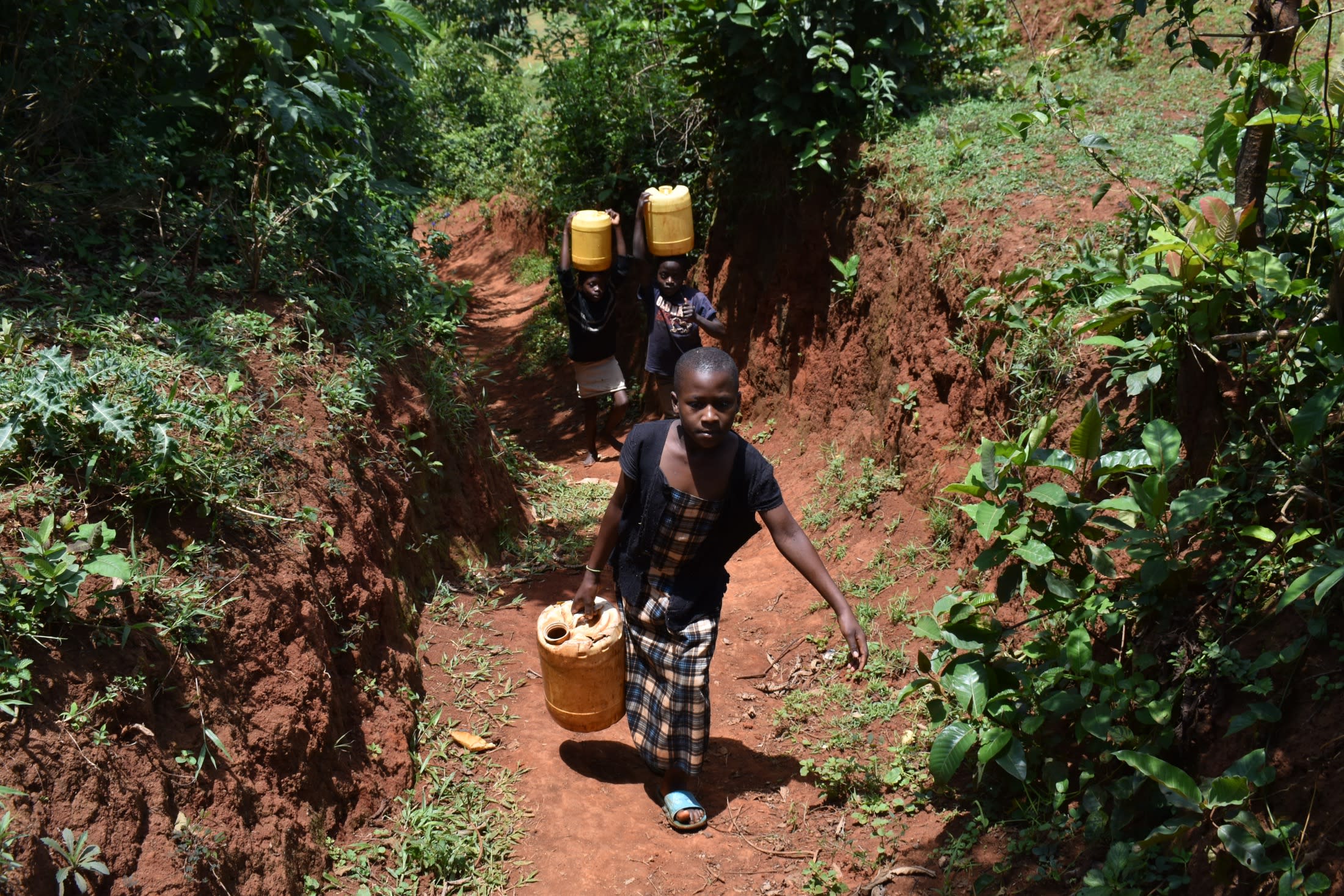
"The access [area] is giving us problems. Spillages and runoff water also make the area slippery, hence [we are] susceptible to minor accidents, especially [the] children fetching water," Evans said.
The people of Mwitsai are ready for their spring to be protected and for access to be made easier so they can safely collect reliable, uncontaminated drinking water and not waste so much time and energy on collecting water.
What We Can Do:
Spring Protection
Protecting the spring will help provide access to cleaner and safer water and reduce the time people have to spend to fetch it. Construction will keep surface runoff and other contaminants out of the water. With the community's high involvement in the process, there should be a good sense of responsibility and ownership for the new clean water source.
Fetching water is a task predominantly carried out by women and young girls. Protecting the spring and offering training and support will, therefore, help empower the female members of the community by freeing up more of their time and energy to engage and invest in income-generating activities and their education.
Training on Health, Hygiene and More
To hold trainings during the pandemic, we work closely with both community leaders and the local government to approve small groups to attend training. We ask community leaders to invite a select yet representative group of people to attend training who will then act as ambassadors to the rest of the community to share what they learn. We also communicate our expectations of physical distancing and wearing masks for all who choose to attend.
The training will focus on improved hygiene, health, and sanitation habits in this community. With the community's input, we will identify key leverage points where they can alter their practices at the personal, household, and community levels to affect change. This training will help to ensure participants have the knowledge they need about healthy practices and their importance to make the most of their water point as soon as water is flowing.
Our team of facilitators will use a variety of methods to train community members. Some of these methods include participatory hygiene and sanitation transformation, asset-based community development, group discussions, handouts, and demonstrations at the spring.
One of the most important issues we plan to cover is the handling, storage, and treatment of water. Having a clean water source will be extremely helpful, but it is useless if water gets contaminated by the time it is consumed. We and the community strongly believe that all of these components will work together to improve living standards here, which will help to unlock the potential for these community members to live better, healthier lives.
We will then conduct a small series of follow-up trainings before transitioning to our regularly scheduled support visits throughout the year.
Training will result in the formation of a water user committee, elected by their peers, that will oversee the operations and maintenance of the spring. The committee will enforce proper behavior around the spring and delegate tasks that will help preserve the site, such as building a fence and digging proper drainage channels. The fence will keep out destructive animals and unwanted waste, and the drainage will keep the area's mosquito population at a minimum.

 Protected Spring
Protected Spring
 Rehabilitation Project
Rehabilitation Project










